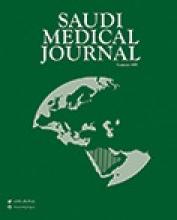Abstract
OBJECTIVES: To investigate knowledge, attitude, and practice (KAP) of Iranian adolescent girls towards 3-4-methylenedioxymethamphetamine (MDMA [Ecstasy]).
METHODS: A cross-sectional design study was conducted on female adolescents in Tehran high schools. The study took place in Tehran University of Medical Sciences, Tehran, Iran in October to December 2008. A randomized cluster sample of adolescent girls from 14-18 years old, and enrolled in 57 public high schools of Tehran were selected. A written informed consent was obtained from all study participants. In order to assess the participants' demographic characteristics, and KAP towards Ecstasy, a 61-item, researcher-made, valid, and reliable questionnaire was completed anonymously by all participants at schools. The questionnaire included 4 main domains assessing adolescents': 1. Demographic characteristics (14 items), 2. Knowledge (10 items) 3. Attitude (24 items), and 4. Practice (13 items) toward Ecstasy. Results were considered significant at p ≤ 05.
RESULTS: A total of 4116 adolescents participated in the study. A high proportion of respondents had little knowledge (70%), positive attitude (80%), and moderate practice (60.4%) towards Ecstasy. In addition, findings revealed a significant relationship between knowledge-attitude and attitude-practice with respect to Ecstasy use (Spearman correlation coefficient, rs=0.760, p=0.003).
CONCLUSIONS: Considering adolescents' improper KAP toward Ecstasy, it is obvious that there is a need for appropriate educational interventions to inform adolescent girls regarding the harmful effects of Ecstasy.
- Copyright: © Saudi Medical Journal
This is an open-access article distributed under the terms of the Creative Commons Attribution-Noncommercial-Share Alike 3.0 Unported, which permits unrestricted use, distribution, and reproduction in any medium, provided the original work is properly cited.






